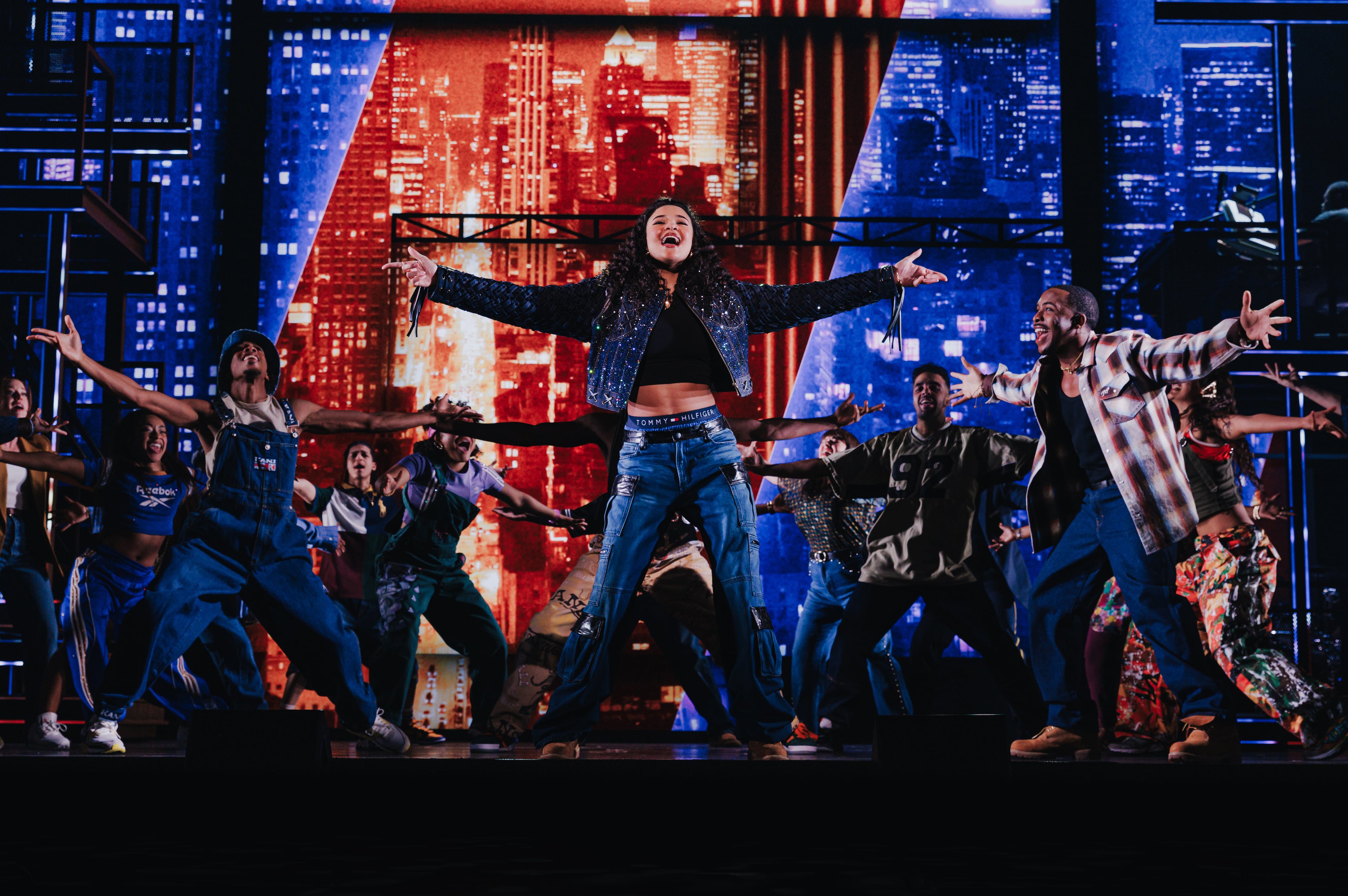Charmaine Minniefield’s ‘Indigo Prayers’ resonates with energy, deep roots

Charmaine Minniefield’s “Indigo Prayers: A Creation Story” is a small show with outsized energy and deep roots.
On view in the John Howett Works on Paper Gallery at the Michael C. Carlos Museum through Sept. 11, the show gathers seven energetic paintings in celebration of the artist’s continuing exploration of memory and ritual in African and African American history, with special emphasis on a traditional African American gathering, dance and worship practice known as the ring shout.

According to Minniefield, the ring shout, a circular “full-body rhythmic movement” of percussion and dance, was “reborn [from likely origins in West and Central Africa] during enslavement in the American South in radical resistance against efforts and systems that dismantled cultural identity and community.”
This counterclockwise, circular dance and call-and-response was a form of prayer and celebration that became a sort of secret, communal drum on the wooden floors of the gathering houses that came to be known as Praise Houses, preserving unity and custom in a system that was designed to eradicate both.
A few years ago, just before COVID-19 broke out, the Atlanta-based artist traveled to Gambia, West Africa, to research her maternal ancestral roots. Forced into a longer stay by the outbreak of the pandemic, she used the materials at hand to create embodied memories of her maternal ancestors — an homage to their efforts of resistance and their joy in the face of the seemingly insurmountable hardships of a life of enslavement.
Employing her own body in service of embodied memories of her maternal ancestors, she created these slightly larger than life-sized self-portraits — or perhaps they are more aptly described as self as portrait — of women caught in mid-dance using indigenous materials of indigo and mahogany bark, presumably with dyes or inks made from these natural materials.
She painted the swirl of dresses in motion with indigo, a material brought here by her enslaved ancestors. She captures the rich brown of their skin with the bark of the mahogany tree. With crushed oyster shells in a slurry-like application of “paint” or a heavier stucco-like paste, she recalls the history of tabby, that concrete-like building material used on the coast of West Africa, and in Georgia and the coastal Carolinas during the time of enslavement. Created by burning oyster shells to make lime and mixed with sand, water and ash, tabby was near-ubiquitous in structures from slave dwellings to plantation homes.

In the small rectangular gallery space, these seven paintings, all but one of a single dancer, the seventh inhabited by a group of women, create a single installation — that of a ring shout of which you as viewer simultaneously are, and are not, a part. Minniefield makes manifest the dizzying feeling of the counterclockwise whirl (as the ring shout historically progressed), of movement around a central still point. You, the viewer, are engulfed by the movement.
Even the paintings themselves “move.” Firmly mounted to the wall, but only at the top of the painting, the 8-foot-long paintings on canvas hang loosely and slightly off the wall so that they come to life, contributing to the sense of movement as they stir in the breeze of air conditioning.
One-word titles convey the coiled power within these paintings — “Freedom,” “Love,” “Wisdom,” “Peace” — that carry the weight of the cultural and the personal: Minniefield learned the ring shout from her maternal ancestor, grandmother Oral Lee Fuqua.
Minniefield articulates the feeling of the dance so deftly that all that is missing is the sound of it. Suddenly the silence becomes an almost-component of the piece in a way that is hard to describe. By emphasizing this missing element, the silence in the room highlights, rather than diminishes, the human joy and imagined cries of her ancestors and many others like them.
These paintings are situated within the oeuvre of the artist’s more comprehensive and ongoing Praise House Project of which they are a part. The first in the series, installed at Oakland Cemetery in conjunction with Flux Projects, celebrated Juneteenth 2021 with a structure designed to honor the 800 enslaved people interred in the cemetery’s African American burial grounds.
The project hopes to place site-specific art installations in locations throughout metro Atlanta. According to Emory Univerysity’s website, one of them is currently scheduled for the Emory campus in the 2023-24 academic year.
The project will also commemorate the legacy of the late Pellom McDaniels III, activist, historian and curator of African American collections at the Stuart A. Rose Manuscript, Archives and Rare Book Library, who was instrumental in appointing Minniefield to a yearlong residency with the Rose Library in 2019-20, “an engagement that planted the seeds that grew into the Praise House project.”
On Sunday, Aug. 28, a series of public events will celebrate the exhibition and the launch of the Praise House Project at Emory.
VISUAL ART REVIEW
“Indigo Prayers: A Creation Story”
Through Sept. 11. $6-$8. 571 S. Kilgo Circle, Atlanta. 404-727-4282, carlos.emory.edu.

MEET OUR PARTNER
ArtsATL (www.artsatl.org), is a nonprofit organization that plays a critical role in educating and informing audiences about metro Atlanta’s arts and culture. Founded in 2009, ArtsATL’s goal is to help build a sustainable arts community contributing to the economic and cultural health of the city.
If you have any questions about this partnership or others, please contact Senior Manager of Partnerships Nicole Williams at nicole.williams@ajc.com.

